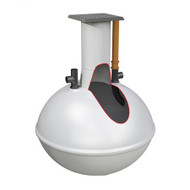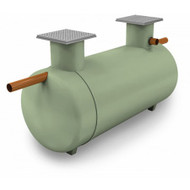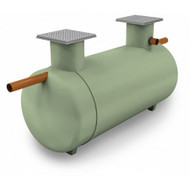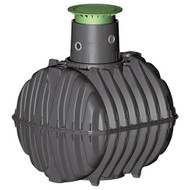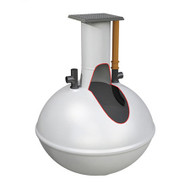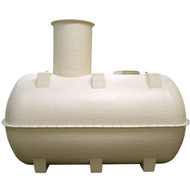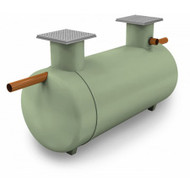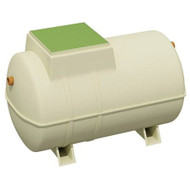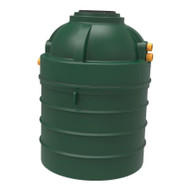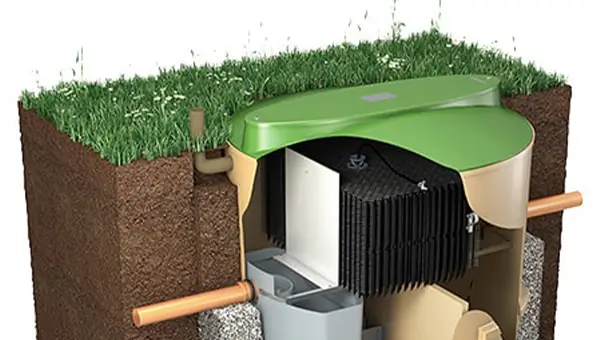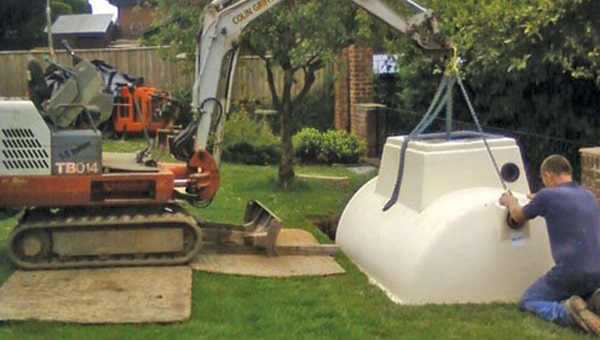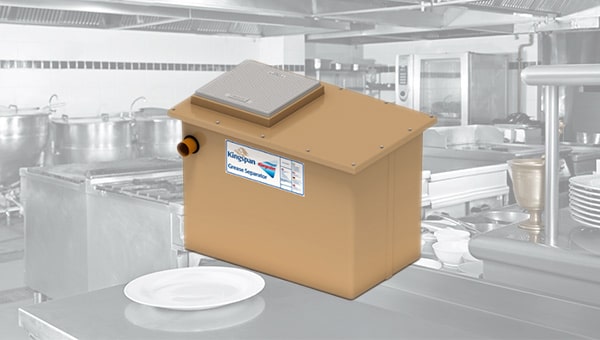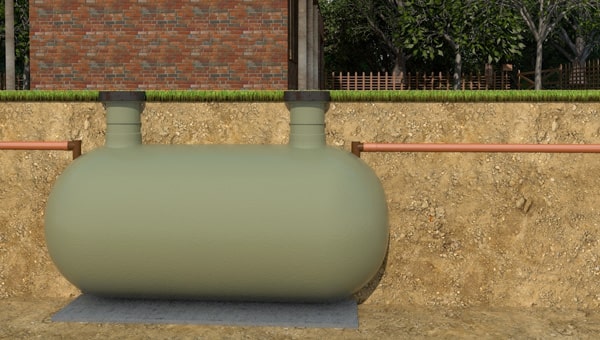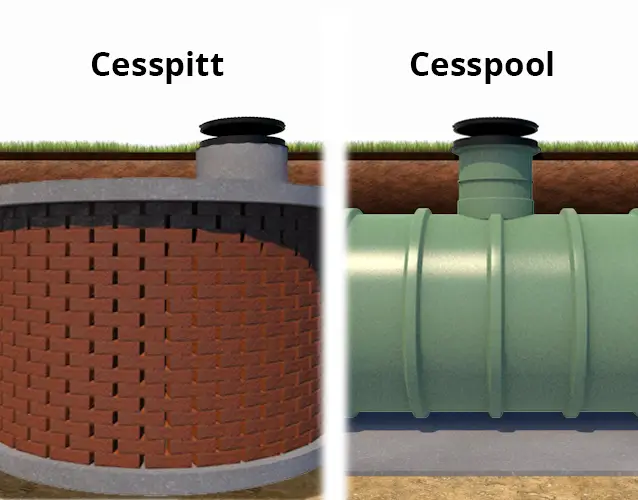
Cesspit and cesspool are terms that often get used interchangeably, leading to some confusion about these wastewater management systems. While they share a similar name, they do have distinct histories, functions, and environmental impacts.
This article aims to help clear up the differences between the two and explain the reasons behind the shift towards more sustainable wastewater management practices. We’ll start with a quick comparison for anyone who wants the short answer.
What is the difference between a Cesspit and a Cesspool?
A cesspit is a brick-lined hole in the ground once commonly used to dispose of sewage and wastewater in a way that was unsafe for both the environment and public health. They have long been banned from use in the UK.
A cesspool is a watertight tank buried in the ground to which you connect your drainage pipes so that your sewage and wastewater can be safely stored for regular removal. They are currently banned from use in Scotland but can still be used as a last-resort option in England and Wales.
Looking for a more detailed explanation of their uses, limitations, and the advancement towards more sustainable solutions? Then read on.
What is a Cesspit?
Historically, a cesspit was just a hole dug into the ground, often lined with bricks or stones with gaps between them, where household sewage and wastewater were collected.
The gaps in the lining allowed liquid waste, such as grey water from sinks and baths, to seep into the surrounding soil, while solid waste, such as human excrement and food scraps, accumulated at the bottom of the pit.
These structures were once a common method of wastewater disposal, particularly in rural areas and smaller settlements where access to centralised sewage systems was limited. Their simplicity and low cost made them an attractive option for many homeowners. However, their reliance on the ground to absorb liquid waste posed a significant threat to public health and the environment.
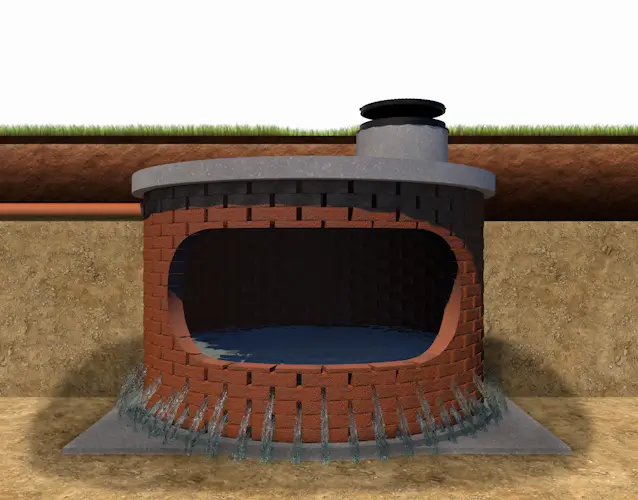
Why are Cesspits no longer used?
As populations grew and urbanisation increased throughout the country, the limitations of cesspits became increasingly apparent. Unsurprisingly, allowing untreated wastewater to seep into the ground led to contaminated water supplies and, subsequently, outbreaks of diseases such as cholera and typhoid. These outbreaks highlighted the urgent need for improved sanitation.
Recognising the severe public health risks posed by cesspits, the UK government introduced the Public Health Act of 1936. This landmark legislation introduced stricter regulations for wastewater management and effectively banned the use of cesspits in many areas.
This significant turning point in wastewater management emphasised the importance of watertight sewage systems and paved the way for the development of the more effective wastewater treatment and storage methods that we have today.
Initially, this led to the gaps in brick-lined cesspit designs being removed in an effort to make the structures more watertight and, therefore, safer to use. However, over time, the mortar between the bricks would still erode away and allow the contents of the cesspit to leak out again. The need for a more long-term watertight solution is what then led to the arrival of the cesspool.
What is a Cesspool?
Unlike Cesspits, Cesspools are watertight plastic tanks (usually made from GRP or similar) that are buried underground to store sewage and wastewater until it can be removed by a specialist contractor.
While still a relatively basic system, cesspools offered a significant improvement in wastewater management over the cesspits which they came to replace. In compliance with the new legislation, cesspools ensured that wastewater was no longer allowed to seep into the ground, reducing the risk of contamination.
However, cesspools do not treat wastewater; they simply contain it. This means they still require regular emptying, and the removed waste must be disposed of responsibly.
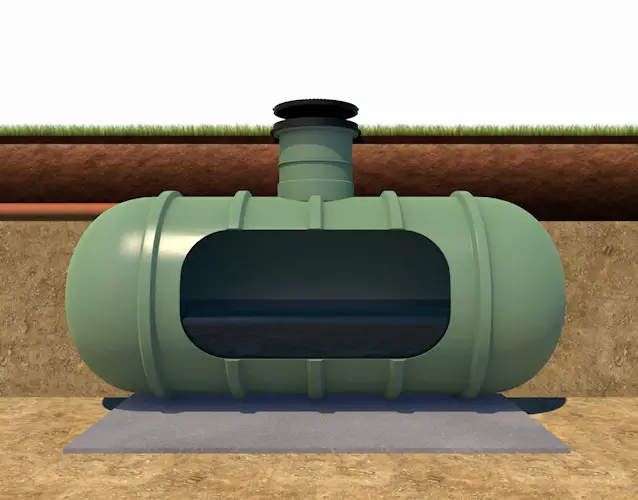
Are Cesspools still used Today?
While cesspools were a step forward from cesspits, they are now considered an outdated and less desirable method of wastewater management. While they might still be necessary in some remote areas where access to mains drainage or other treatment options is limited, they are generally only considered as a last resort in areas where alternative systems are impractical. Even then, strict regulations govern their use to minimise environmental risks.
The reason for this is that, ultimately, a cesspool is just a holding tank for waste collection that must be regularly emptied by a licenced waste disposal company. The process of emptying an underground tank carries a degree of risk regarding leaks and spillages, and the tank itself, either through incorrect installation or wear and tear over time, can also become a potential hazard.
Due to this, they are considered a “high risk” to the surrounding environment, and that’s why the use of cesspools is being phased out in many areas. In Scotland, for example, cesspools are now illegal to use altogether. This reflects the growing recognition of the environmental and public health risks associated with these outdated systems.
What are the alternatives to using a Cesspit or a Cesspool?
Modern alternatives to dealing with off-mains drainage, such as septic tanks and sewage treatment plants, offer more efficient and environmentally friendly solutions. Septic tanks separate solid waste from liquids, which can then be discharged into a septic drainage field. There, naturally occurring waste-degrading bacteria in the soil is relied upon to treat the effluent as it is soaked into the ground. Now, you might be thinking that there seem to be a lot of similarities between cesspits and septic tanks, and you’d essentially be right.
Septic tanks are more strictly regulated and can only be used in places where it is safe to have a septic drainage field (i.e. nowhere near a public watercourse), but they basically do the same job. For this reason, they, too, are slowly being phased out in favour of the more environmentally friendly domestic sewage treatment plants.
Buy Septic Tanks Online
Sewage treatment plants utilise systems that encourage the growth of waste-degrading bacteria in the tank to treat the liquids and even break down some of the solids. They can process larger volumes of wastewater, and the treatment process produces high-quality effluent that can be safely released into the environment without the need for a drainage field.
Buy Sewage Treatment Plants Online
For this reason, a sewage treatment plant is often considered to be the most sensible, responsible, and future-proof off-mains sewage treatment option available today.
Can a Cesspool still be called a Cesspit?
While there is a clear distinction between the two, over time, the terms "cesspit" and "cesspool" have become conflated in common language. So much so that if you ask for a cesspit today, most stockists and suppliers will automatically know that you actually want a cesspool. So why was this article needed, then?
Arbitrary naming confusion aside, understanding the difference between cesspits and cesspools is crucial to understanding the evolution of wastewater management. Cesspits, with their primitive design and potential to contaminate the environment, have rightly been consigned to history. Cesspools were a more environmentally friendly replacement that enabled the safe storage of off-mains waste. But they, too, posed enough of a risk that better solutions were needed.
Now, as the world continues to understand the importance of protecting the environment and improving sanitation, Sewage Treatment Plants are rising up to replace cesspools.
By understanding the history and limitations of cesspits and cesspools, homeowners and businesses can make informed decisions about their wastewater management needs. If you think you need a cesspit, you actually want a cesspool. However, while cesspools might still be an option in some limited circumstances, it's generally advisable to explore more modern and environmentally friendly alternatives.
How to choose the right off-mains drainage solution
Choosing the right type of off-mains drainage solution for your property isn't always an easy task. There are many things that must be taken into consideration. In general, however, our mantra is;
PUMP - TREAT - STORE
- Pump It -
- The best solution for off-mains sewage and wastewater is to use pump chambers and a private pipework system to transport it to the nearest mains system.
- Treat It -
- If you can’t realistically pump it, then use a sewage treatment plant or septic tank with a drainage field to safely deal with as much of it as you can locally.
- Store It -
- If you can’t treat it, your last resort option is to store it in a cesspool if it is still legal to do so in your area.
For more information about these options, check out our “Guide to Off-Mains Drainage” article.
And what if you can’t store it? Well, you have two other options in that case—move to a new house with less complicated drainage problems or contact our technical team, who are always on hand to offer free, impartial advice for all of your drainage needs.
JDP has a wide range of Cesspools, Septic Tanks, and Sewage Treatment Plants available, and our team is always ready to answer any of your questions and offer advice if you need help choosing the right one for your project.

